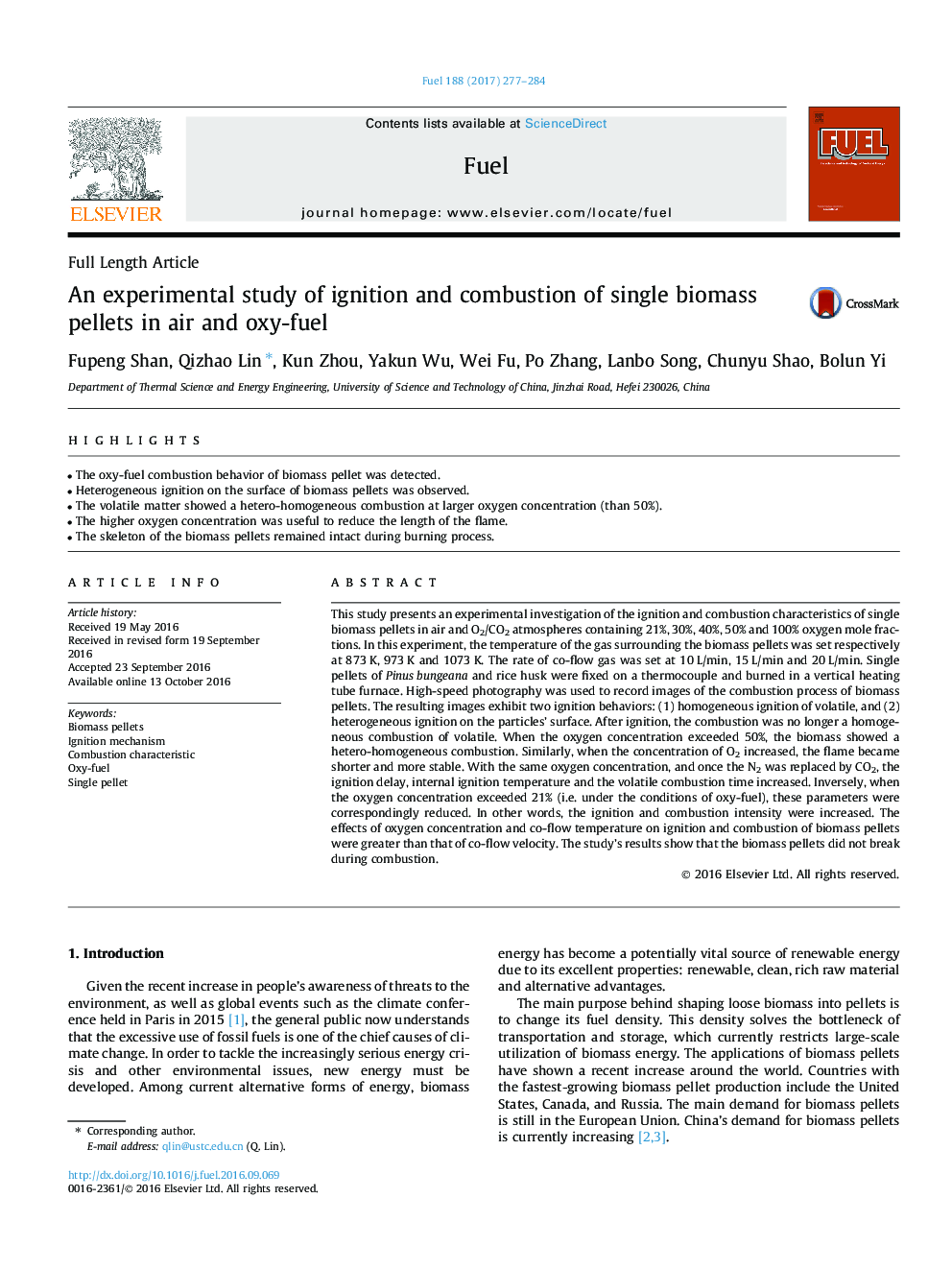| کد مقاله | کد نشریه | سال انتشار | مقاله انگلیسی | نسخه تمام متن |
|---|---|---|---|---|
| 6475785 | 1424976 | 2017 | 8 صفحه PDF | دانلود رایگان |
- The oxy-fuel combustion behavior of biomass pellet was detected.
- Heterogeneous ignition on the surface of biomass pellets was observed.
- The volatile matter showed a hetero-homogeneous combustion at larger oxygen concentration (than 50%).
- The higher oxygen concentration was useful to reduce the length of the flame.
- The skeleton of the biomass pellets remained intact during burning process.
This study presents an experimental investigation of the ignition and combustion characteristics of single biomass pellets in air and O2/CO2 atmospheres containing 21%, 30%, 40%, 50% and 100% oxygen mole fractions. In this experiment, the temperature of the gas surrounding the biomass pellets was set respectively at 873 K, 973 K and 1073 K. The rate of co-flow gas was set at 10 L/min, 15 L/min and 20 L/min. Single pellets of Pinus bungeana and rice husk were fixed on a thermocouple and burned in a vertical heating tube furnace. High-speed photography was used to record images of the combustion process of biomass pellets. The resulting images exhibit two ignition behaviors: (1) homogeneous ignition of volatile, and (2) heterogeneous ignition on the particles' surface. After ignition, the combustion was no longer a homogeneous combustion of volatile. When the oxygen concentration exceeded 50%, the biomass showed a hetero-homogeneous combustion. Similarly, when the concentration of O2 increased, the flame became shorter and more stable. With the same oxygen concentration, and once the N2 was replaced by CO2, the ignition delay, internal ignition temperature and the volatile combustion time increased. Inversely, when the oxygen concentration exceeded 21% (i.e. under the conditions of oxy-fuel), these parameters were correspondingly reduced. In other words, the ignition and combustion intensity were increased. The effects of oxygen concentration and co-flow temperature on ignition and combustion of biomass pellets were greater than that of co-flow velocity. The study's results show that the biomass pellets did not break during combustion.
Journal: Fuel - Volume 188, 15 January 2017, Pages 277-284
